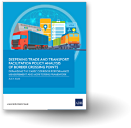Special economic zones (SEZs): A tool for investment, trade, and development
Shenzhen was a small fishing village in the People's Republic of China (PRC) with only 20,000 residents and no industrial base more than 30 years ago. It had little potential of becoming what it is now—a sprawling metropolis of more than 10 million inhabitants, the PRC’s highest per-capita income city, and a world manufacturing hub with a potential to be the new Silicon Valley. The economic ‘miracle’ began in 1980 when the village was established as the country’s first special economic zone1 (SEZ). Far from Beijing’s watchful eye and situated near Hong Kong, China, Shenzhen was a direct link to international trading routes. Since then, nearly 200 of the Global Fortune 500 have made local investments in the city with a combined worth of $87 billion.
Shenzhen is just one of numerous SEZs which have made significant contributions to the country’s economic success and growing importance of global value chains (GVCs). These zones employ 16 million people overall. Cumulatively, 20 per cent of total foreign direct investment (FDI) into the country has made its way into SEZs. Almost half of the country’s exports are estimated to originate in SEZs.
The PRC is not the only country which has successfully utilized SEZs to increase trade and investment, plug into GVCs, and achieve a certain degree of economic success. Bangladesh’s successful export processing zones (EPZs), which focus on industries leveraging its comparative advantage in low-cost labor, further highlights the economic contributions of SEZs.
As of 2013, accumulated investment in the EPZs has reached nearly $2.8 billion. Approximately 290 active companies are operating in the EPZs. Exports have grown rapidly, at 23 per cent per annum since 1993 amounted to $3.5 billion by 2013. Over the past 10 years, nearly 15,000 new jobs have been created annually in the EPZs, reaching 377,441 jobs in 2013.
For developing and least-developed countries such as the PRC and Bangladesh, putting in place a policy framework to address obstacles to participation in GVCs and attracting investments is difficult at the national level. In these countries, SEZs offer a “shortcut” to more comprehensive structural reforms, such as, elimination of red tape, corruption, high tariff and taxes. SEZs can provide economies with relatively open and connected enclaves characterized by duty free import and export, simplified customs procedures, fewer impediments on foreign ownership, as well as developed transport infrastructure, and access to electricity.
Not all SEZs have resulted to success stories such as Shenzhen; some have failed to live up to their original projection such as Cambodia’s SEZ initiative. Of the 21 SEZs Cambodia has approved since 2005, only 6 have commenced operations as of early 2010. No policies, mechanisms, or incentives have been implemented to facilitate technology or knowledge transfer between foreign firms and local companies, or to encourage collaboration with local companies. This illustrates that SEZs have lacklustre results if the appropriate linkages are not made and technological capabilities are not built up.
There is no hard-and-fast rule in establishing successful SEZs. However, governments interested in establishing SEZs would do a much better job in designing them if they consider some of the key issues involved in ensuring that SEZs become a tool for trade, investment and development.
Firstly, a country’s comparative advantage should be considered in the establishment of SEZs. The case of Bangladesh shows that SEZs are more likely to be successful if they focus on industries where they have comparative advantage. Following this initial success is the creation of linkages and upgrading to higher-value-added activities.
Secondly, policies that stimulate domestic investment in the SEZ—thereby creating important linkages between SEZ and the domestic economy— should be pursued. This will pave the way for the technology, skills, and employment opportunities attracted in the SEZ to spill over into the domestic economy, through skills and technology transfer, or through the creation of industries.
Thirdly, policies to attract investments to SEZs should include not only investment and trade incentives, and exemptions to regulations, but also initiatives to enhance skills and promote innovation and competitiveness
Finally, as the production process grows more fragmented with intermediate inputs travelling through multiple countries before reaching the final assembly line, plugging into global value chains requires SEZs to establish extensive logistics systems.
1 A special economic zone (SEZ) is a demarcated area designated to enhance industry competitiveness, attract foreign direct investment (FDI), develop and diversify exports, create jobs, and pilot new policies and approaches. SEZs are accorded with incentives such as exemptions from taxes, quotas, labor laws and other restrictive laws, allowing goods manufactured at SEZs to have globally competitive prices. The term SEZ encompasses various concepts including commercial free zones, export processing zones (EPZs), free enterprises (FEs) or single factory/single unit free zones, free ports.




